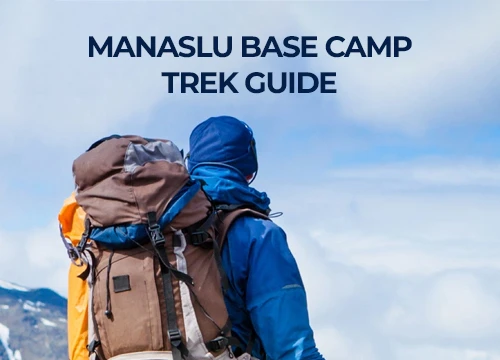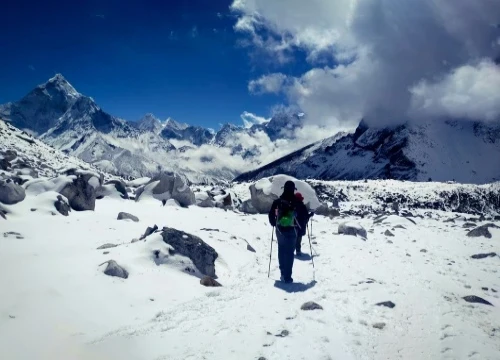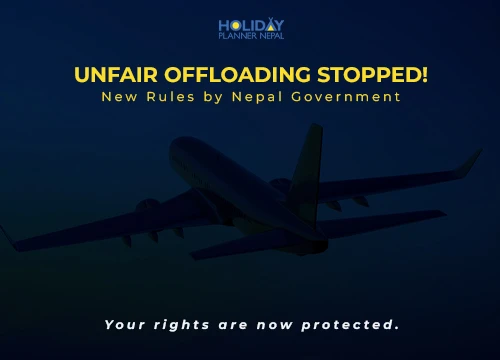Everest Base Camp Trek Cost Full Details
Understanding the financial aspects of your Everest Base Camp Trek is critical for effective budgeting. The overall cost of the trek can vary significantly based on several factors, including the duration of your stay, the trekking route you choose, and the level of comfort you desire. On average, trekkers can expect to spend anywhere from $1,500 to $3,000 for a standard 12- to 14-day trek for basic facilities, and this doesn’t include the international airfare. This cost typically includes permits, accommodation, meals, and guide services but can increase if you opt for additional luxuries or guided tours.
Permits are one of the primary costs that trekkers must consider. There are two essential permits for the Everest Base Camp Trek: the Sagarmatha National Park Entry Permit and the Khumbu municipality permit. Together, these permits can cost around $50 to $60, depending on the current rates set by the Nepalese government. It is important to check for any updates or changes to the regulations as your trek date approaches, as policies can sometimes shift.
For making the permits, trekkers require a copy of their passport or a copy of their citizenship.
Additionally, travellers should factor in costs for helicopter flights in case of bad weather, gear, and insurance. While these expenses are often viewed as secondary, they can add a substantial amount to your overall budget. For instance, high-quality trekking gear can be quite an investment, but it is crucial for ensuring your comfort and safety on the trail. Likewise, travel insurance, which covers emergency evacuations and trip cancellations, is a vital component that should not be overlooked in your financial planning.
What is the cost of trekking to Everest base camp?
The cost of trekking to Everest base camp ranges from $800$ to $1500$ for a basic package or even when trekkers go on their own.
Everest base camp flight cost, permit cost, food, overnight, guide and porter cost| Nationality | Flight Cost | Permit cost | Tea house (food and overnight stay) | Guide & porter |
| Nepalese | 26000 (two way) | Rs 200 | 4000 per day | 5000 per day |
| Indians | 26000 (two way) | Rs 5000 | 5000 per day | 6000 per day |
| Foreigner | 455$ (two way) | 50$ | 40$ per day | 50$ per day |
If we do the math for the total cost, then the trek cost for 11 days will be
- For 11 days, the cost of food is 44,000 per person for Nepalese
- The cost for food will be 55000 per person for Indians and foreigners.
- The cost for guides and porters is 55 thousand per person for Nepalese.
- The cost for a guide and porter for Indians and foreigners is 550 dollars per person.
What is the total cost of trekking to Everest base camp?
- So, for the Nepalese, the cost will be 44000+55000+200+26000 = 125200
- Everest base camp trek cost for Indians is around 90 thousand INR (26000+ 5000+ 55000+ 66000) = 152000
- Everst base camp trek cost for all nationalities except Indians will be ( 455$ + 50$+440 $+550$) = 1495$
Is the price less when we select a trekking agency for going to Everest base camp?
.Choosing a trekking agency can be a very good choice as they handle all the logistics and arrange everything, which gives a hassle-free experience. Even cost-wise, trekking agencies provide a very good rate as they have B2B rates, which makes the trip price comparatively much less compared to going solo.
Holiday Tours Nepal has been organizing treks in the Everest region for the past 12 years and has a very good reputation in the Khumbu region. The cost of trekking in the Khumbu region when choosing Holiday Tours Nepal as a travel companion is way less than going solo
Why is planning necessary for the Everest Base Camp Trek?
Planning for your Everest Base Camp Trek is not just a recommendation; it's a requirement. The trek to Everest Base Camp is one of the most iconic hiking and commercial routes in the world, attracting adventurers from all corners of the globe. With the increasing popularity of this trek, early planning can offer several advantages, including better availability of accommodations, guides, and permits. The sooner you begin your preparations, the more options you will have, allowing you to tailor your experience to your preferences.
Another crucial aspect of planning ahead is ensuring that trekkers are financially, physically, and mentally prepared for the challenges that await them. The trek is demanding, with altitudes reaching over 5,000 meters, and the weather can be unpredictable. By allowing ample time for training, you can build your endurance and strength, making the ascent more manageable. Additionally, this preparation phase allows you to research and understand the trek's intricacies, from acclimatisation strategies to gear selection, ensuring a smoother experience.
Lastly, early planning can significantly impact your budget. Prices for flights, accommodation, and trekking permits can fluctuate based on demand and seasonality. By booking in advance, you can secure better rates and avoid the last-minute rush that often leads to inflated costs. Understanding the overall financial commitment involved in the trek will help you save effectively and allow for a more enjoyable hiking experience without the stress of financial constraints.
What visa is required for the Everest base camp trek?
At least 15 days tourist visa is recommended for the Everest base camp trek, which will cost 50$. Before setting foot on the trails of the Everest Base Camp, it is essential to secure the necessary visa for Nepal, and after that, getting permits for the trek is required. Most travelers will need a tourist visa first, which can be obtained upon arrival at Tribhuvan International Airport or in advance through a Nepali embassy or consulate. The visa fees can vary based on the duration of your stay, with options ranging from 15 to 90 days. It’s advisable to check for the latest visa policies before your trip, as requirements can change.
What permits are required for the Everest base camp trek?
After obtaining a tourist visa, trekkers must obtain specific permits to access the Everest region. The two primary permits required are the Sagarmatha National Park Permit and the Khumbu municipality permit. The Sagarmatha National Park permit is essential for entering the park, while the municipality permit is mandatory for all trekkers to help ensure safety and provide support in case of emergencies. These permits can be obtained in advance or purchased upon arrival in Lukla after entering the Pasang Lhamu gate.
Where are the permits during the Everest base camp trek?
It is crucial to keep your permits safe and accessible during your trek. Permits will be checked at various checkpoints along the trail at Lukla, Monjo, Namche, and Tengboche, and not having them can result in fines or being turned back. Being well-informed about the permit process and ensuring you have all the necessary documentation will help you avoid any last-minute hassles, allowing you to focus on enjoying the spectacular scenery and the adventure ahead.
What is the cost for a guide and porter for the Everest base camp trek?
When planning your Everest Base Camp Trek, one of the key decisions you'll face is whether to hire a guide or porter or not. While trekking independently is possible, many choose to hire local guides and porters to enhance their experience and ensure safety on the trails. Guides can provide valuable insights about the region, assist with navigating the trails, and help with cultural interactions, while porters can carry your gear, allowing you to focus on the trek itself.
The cost of hiring a guide typically ranges from $25 to $50 per day, depending on their experience and the level of service they provide. Porters usually cost around $15 to $30 per day. These costs can vary based on the trekking company you choose or if you decide to hire them directly in Nepal. It is advisable to thoroughly research reputable trekking companies, read reviews, and compare prices to ensure you find a guide or porter that suits your needs and budget.
Moreover, hiring local guides and porters contributes to the local economy and supports communities in the Everest region. These individuals often possess extensive knowledge of the trails, weather conditions, and cultural customs, which can greatly enhance your trekking experience. By considering the option of hiring a guide and/or porter, you can ensure a more enjoyable and safer adventure as you navigate the stunning landscapes of the Himalayas.
Lastly, tips for guides and porters are customary in Nepal and should be included in your budget. While the amount can vary based on the level of service provided, a general guideline is to budget around 10-15% of your total trekking costs for tips. This shows appreciation for their hard work and dedication and is a common practice among trekkers. By factoring in these miscellaneous expenses, you can create a more comprehensive and realistic budget for your Everest Base Camp adventure.
What is the travel insurance cost for the Everest base camp trek?
Premium travel insurance from world nomads is recommended, which will cost somewhere around 200 to 250 dollars for the everest base camp trek. The cost of travel insurance usually depends upon the policies and the facilities that are included. World Nomad is one of the most trusted insurance brands. The insurance costs start at 120 dollars and can range to a much heavier price according to the demands and necessities of the clients.
The cost of insurance depends upon the number of days, so the days that must be covered are from the arrival period to the ending period of the trip, which can range from 11 to 20 days. The factors, like the high altitude of the trekking destination, must be clear as well. The insurance must cover emergency evacuation through helicopter and all the other necessary medication costs.
How much money is needed for food and water during the Everest base camp trek?
Food and water expenses are essential components to consider when budgeting for your Everest Base Camp Trek. While trekking, you will primarily eat at the tea houses along the trail, which typically offer a menu of local and international dishes. Prices for meals can vary but generally range from $8 to $20 per meal, depending on the location and type of food you choose. Traditional Nepali dishes, such as dal bhat (rice and lentils), are often the most affordable and provide substantial energy for your trek.
It’s also important to consider your hydration needs during the trek. Clean drinking water is crucial for your health and stamina, especially in high-altitude conditions. While bottled water is available for purchase along the trail, it can become quite expensive, often costing around $2 to $4 per liter. To save costs and reduce plastic waste, many trekkers opt to carry a water purification system, such as tablets or filters, allowing them to refill water from safe sources along the way.
Additionally, some tea houses may charge a "water fee" if you choose to use their facilities for cooking or boiling water. Being mindful of your food and water expenses is vital to managing your overall budget effectively. Planning your meals and hydration strategy will help ensure you maintain energy levels without overspending, allowing for a more enjoyable trekking experience.
What are the Equipment and gear costs for the Everest base camp trek?
While many essential gear items can be rented or purchased in Kathmandu, it's important to invest in high-quality equipment for your trek. Budgeting for gear can vary widely based on what you already own and what you need to buy or rent, so make a checklist to help manage these expenses.
Good quality sleeping bags, down jackets are available for rent at 30 dollars and can tolerate the cold till -25 degree celsius.
What is the cost for changing the devices during the Everest base camp trek?
Another potential expense that trekkers often overlook is the cost of charging electronic devices. Electricity is available in many tea houses, but it often comes with a fee, sometimes around $2 to $8 per charge. If you plan to use your phone for navigation or photography, budgeting for charging costs is wise. Consider carrying a portable power bank to extend your device's battery life without incurring additional charges.
What is the cost for Wifi during the Everest base camp trek?
Even the cost for internet Wi-Fi starts from 3 dollars per day and reaches up to 8 dollars per day till Gorakshep. The Wi-Fi that is fast and reliable is Airlink, which is the most dependent and fast WIFI provider in the Everest region.
What is the cost of staying at a tea house during the Everest base camp trek?
As you begin your trek, the accommodation options become more limited and basic. Along the Everest Base Camp route, you will primarily stay in tea houses, which are local lodges catering to trekkers. Prices for tea house accommodations typically range from $5 to $25 per night, depending on the location and amenities provided. It's important to note that while prices may be lower in the less busy villages, accommodations in more popular areas, like Namche Bazaar, can be pricier due to demand.
Trekkers can even get a single room with attached bathrooms and electric blankets, and the price range of this hotel starts at $40 and reaches up to $300 per day.
While tea houses generally offer basic facilities, they do provide a warm bed and meals, making them a convenient choice for trekkers. As you plan your trek, consider whether you prefer a more comfortable experience with private rooms or if you’re okay with shared accommodations. Budgeting for your accommodation costs will help you manage your finances throughout the trek and ensure you have a comfortable place to rest after a long day of hiking.
Transportation and flight costs for Everest base camp trek
Transportation costs are a significant part of your overall budget when planning for the Everest Base Camp Trek. The journey typically begins with a flight to Kathmandu, Nepal's capital, which serves as the primary gateway for trekkers. Depending on your location, flights can vary widely in price, with round-trip tickets from the United States or Europe averaging between $600 and $2,000. It’s advisable to book your flights well in advance to secure the best deals, especially if you plan to travel during peak trekking seasons.
Once in Kathmandu, you will need to arrange transportation to the starting point of the trek, which is usually Lukla. The most common method of reaching Lukla is by taking a domestic flight from Kathmandu. This short flight offers breathtaking aerial views of the Himalayas but can be subject to delays due to weather conditions. Prices for one-way flights to Lukla typically range from $200 to $220, and it’s recommended to book these flights ahead of time, as they can fill up quickly during peak seasons.
During peak season and bad weather, a helicopter is the only option to reach Lukla and get from Lukla to Kathmandu. The cost for a helicopter ride from Lukla to Kathmandu or Kathmandu to Lukla comes between 500 and 700 dollars per person.
In addition to flights, consider other transportation costs that may arise during your stay in Kathmandu. This includes airport transfers, taxi rides, and possibly bus fares for any additional excursions. Budgeting for these transportation costs will help you avoid any unexpected financial strains and ensure that you have a smooth travel experience from the moment you arrive in Nepal until you set foot on the trekking trails.







